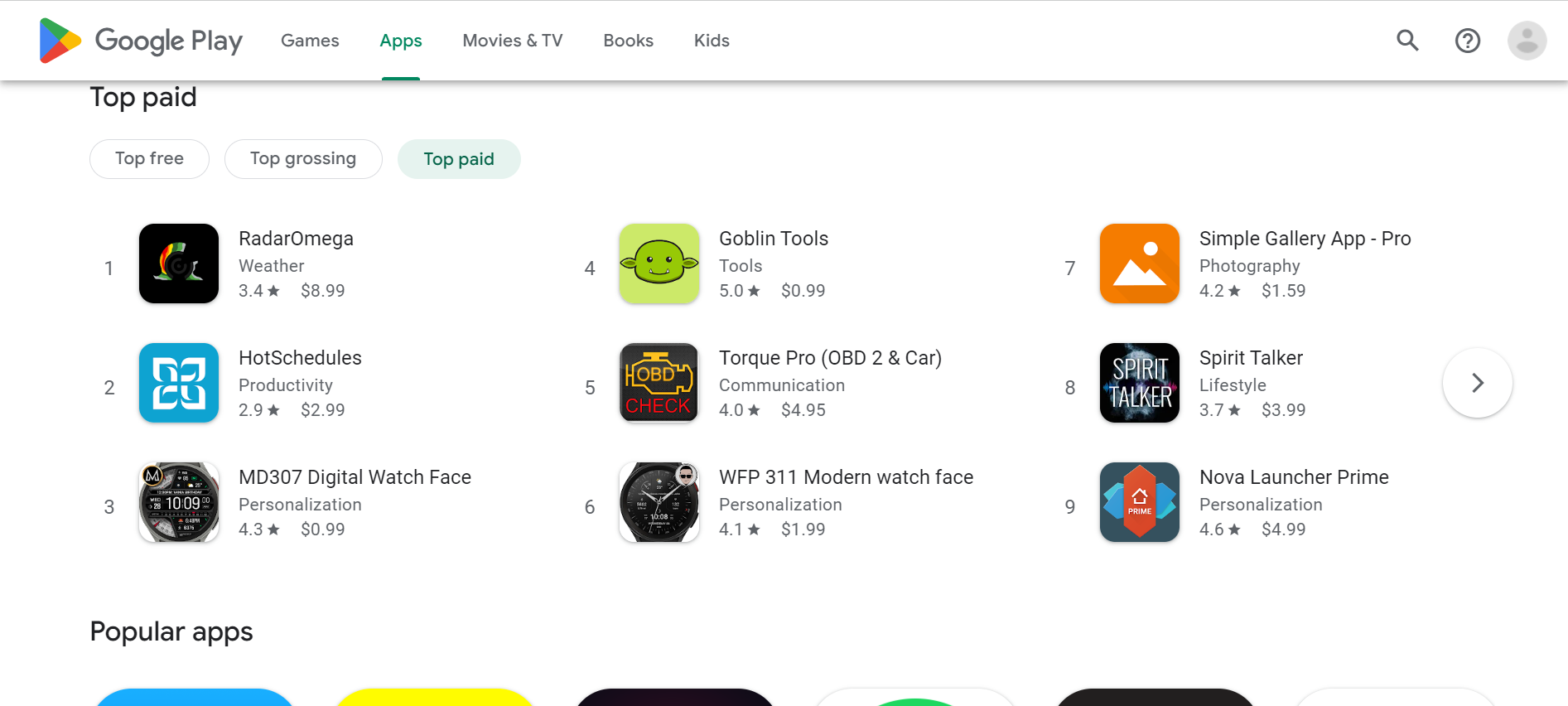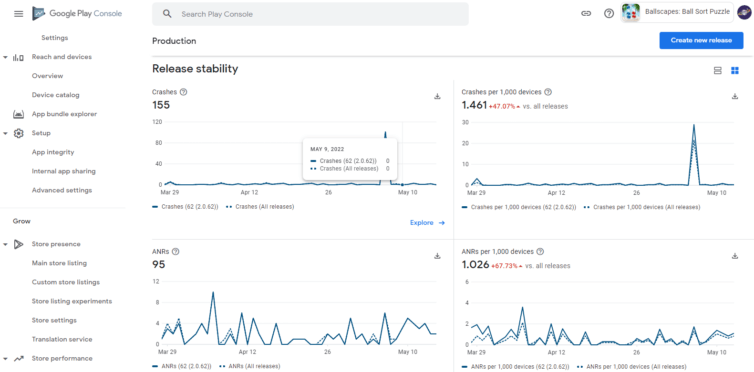As one of the largest mobile app marketplaces in the world, the Google Play Store offers a wide range of apps and games for Android users.
For developers, the Play Store provides a platform to reach millions of users and earn a significant income from their apps.
In this article, we’ll take a closer look at how Android developers earn from the Google Play Store, the various monetization strategies available, and some tips for maximizing your earnings.
How do Android Developers Earn from the Google Play Store?
There are several ways that Android developers can earn from the Google Play Store, including:
1. Paid Apps: Developers can charge users a one-time fee to download their app. The price of the app can vary depending on its features and functionality.

2. In-App Purchases: Developers can offer in-app purchases to users, such as additional levels, virtual goods, or premium features. Users can pay for these purchases within the app using their Google Play account.
3. In-App Advertising: Developers can include ads within their app and earn revenue based on the number of ad impressions or clicks.
4. Subscriptions: Developers can offer subscription-based services within their app, such as a monthly or yearly fee for access to premium content or features.
5. Sponsorship: Developers can partner with brands to offer sponsored content, such as sponsored levels or special offers, within their app.
Each of these monetization strategies has its own pros and cons, and the best strategy for a particular app depends on its features, target audience, and user behavior.
For example, a game app may be better suited for in-app purchases or advertising, while a productivity app may be better suited for a one-time fee or subscription model.
Read more:-
Time Take To Get First App Install In Google Play Store
Rented Movie From the Google Play Store Watched Offline
Paid Apps
Charging users a one-time fee to download an app is one of the most straightforward monetization strategies available to Android developers.
The price of the app can vary depending on the app’s features, functionality, and perceived value. The advantage of this strategy is that it provides a steady stream of income upfront, without relying on in-app purchases or advertising.
However, the downside is that users may be hesitant to pay for an app without trying it first. This is why it’s important for developers to offer a free trial or demo version of their app to give users a taste of what they can expect.
It’s also important to keep the price of the app reasonable and in line with similar apps on the market.
In-App Purchases
In-app purchases are a popular monetization strategy for mobile apps, allowing users to pay for additional features, virtual goods, or premium content within the app.
This strategy can be particularly effective for gaming apps, where users are more likely to spend money on items that enhance their gameplay experience.
The advantage of in-app purchases is that they provide a steady stream of income over time, as users continue to make purchases within the app.
However, it’s important to strike a balance between offering valuable in-app purchases and not overwhelming users with too many options or making the app feel like a “pay-to-win” experience.
Additionally, developers must ensure that the in-app purchases are priced appropriately and offer real value to users.
In-App Advertising
In-app advertising is another popular monetization strategy for Android developers, allowing them to display ads within their app and earn revenue based on the number of ad impressions or clicks.
There are two main types of in-app advertising: banner ads and interstitial ads.
Banner ads are small ads that appear at the top or bottom of the screen and are less intrusive to the user experience.
Interstitial ads, on the other hand, are full-screen ads that appear at natural breaks in the app’s content, such as between levels in a game. Interstitial ads can be more effective at generating revenue, but they can also be more disruptive to the user experience.
The advantage of in-app advertising is that it provides a steady stream of income without requiring users to pay for anything directly.
However, it’s important to strike a balance between displaying enough ads to generate revenue and not overwhelming users with too many ads or disrupting the user experience.
Subscriptions
Subscriptions are a monetization strategy that allows developers to offer premium content or features for a monthly or yearly fee.
This strategy is particularly effective for apps that offer ongoing value to users, such as news apps or productivity apps.
The advantage of subscriptions is that they provide a steady stream of income over time and encourage users to engage with the app regularly.
However, it’s important that the subscription fee is priced appropriately and offers real value to users. Developers must also ensure that the subscription model is transparent and that users understand what they’re paying for.
Sponsorship
Sponsorship is a monetization strategy that involves partnering with brands to offer sponsored content within the app.
This can include sponsored levels or special offers that are only available to users who engage with the sponsored content.
The advantage of sponsorship is that it provides a unique user experience and can generate significant revenue if done correctly.
However, it’s important that the sponsored content is relevant to the app’s target audience and doesn’t feel intrusive or disruptive to the user experience.
Read more:-
Android Applications Banned On Play Store
Mitron Application Removed From The Play Store
Tips for Maximizing Earnings on the Google Play Store
Now that we’ve covered the various monetization strategies available to Android developers, let’s take a look at some tips for maximizing your earnings on the Google Play Store:
1. Research Your Market: Before developing your app, research your market to understand your target audience, their needs, and the competition. This will help you identify the best monetization strategy for your app and ensure that it offers real value to users.
2. Provide Value: The key to earning revenue on the Play Store is to provide value to your users. Whether it’s through a one-time fee, in-app purchases, or subscriptions, ensure that your app offers real value to users and meets their needs.
3. Optimize for User Experience: User experience is critical to the success of your app on the Play Store. Make sure that your app is easy to use, intuitive, and visually appealing. This will encourage users to engage with your app and increase the likelihood of them making an in-app purchase or subscribing to your app.
4. Test Different Monetization Strategies: Don’t be afraid to experiment with different monetization strategies to see what works best for your app. Test different pricing models, in-app purchases, and advertising strategies to find the optimal balance between revenue and user experience.
5. Use Analytics: Use analytics tools to track user behavior and app performance. This will help you identify areas where you can improve the user experience and optimize your monetization strategy.

6. Update Your App Regularly: Regularly updating your app with new features and bug fixes can help keep users engaged and encourage them to spend more time in your app. It can also help attract new users and improve your app’s visibility on the Play Store.
7. Promote Your App: Promote your app through social media, influencer marketing, and other channels to increase its visibility and attract new users. The more users you have, the more revenue you can generate from your app.
The Google Play Store is a highly competitive marketplace, with millions of apps vying for users’ attention.
To earn revenue from the Play Store, Android developers must not only create a high-quality app that meets users’ needs but also implement an effective monetization strategy that encourages users to spend money on the app.
One important factor to consider when choosing a monetization strategy is the type of app you’re developing.
For example, a gaming app may be better suited for in-app purchases or advertising, while a productivity app may be better suited for a one-time fee or subscription model.
Another important factor to consider is the user experience. Users are more likely to spend money on an app if they feel that the app provides real value and enhances their experience.
It’s important to strike a balance between generating revenue and not overwhelming users with too many ads or a “pay-to-win” experience.
In addition to the monetization strategies mentioned earlier, there are other ways that Android developers can earn revenue from their apps.
For example, developers can offer in-app sponsorships or partnerships with brands, or they can sell user data to third-party advertisers. However, it’s important to ensure that these strategies are transparent and ethical.
To maximize earnings on the Google Play Store, Android developers should also pay attention to app store optimization (ASO), which involves optimizing the app’s metadata, keywords, and description to improve its visibility and ranking in the Play Store search results.
This can help attract more users to the app and increase the likelihood of them making an in-app purchase or subscription.
Furthermore, Android developers should regularly update their app with new features, bug fixes, and improvements to keep users engaged and encourage them to spend more time within the app.
This can help improve user retention and attract new users to the app.
It’s also important to track user behavior and app performance using analytics tools.
This can help identify areas where the app can be improved and optimized for better user experience and monetization.
In conclusion, while there are various monetization strategies available to Android developers on the Google Play Store, the key to earning revenue is to provide real value to users and optimize the app for user experience.
By choosing the right monetization strategy, optimizing for ASO, updating the app regularly, and using analytics tools, Android developers can maximize their earnings and build a successful app business on the Play Store.
Read more:-
UpToDown Vs Google Play Store – Guide
Block Android Applications In Google PlayStore
Conclusion
In conclusion, the Google Play Store offers a variety of monetization strategies for Android developers to earn revenue from their apps.
Whether it’s through a one-time fee, in-app purchases, advertising, subscriptions, or sponsorship, there are many ways to earn income from your app.
To maximize your earnings on the Play Store, it’s important to understand your target audience, offer real value to users, optimize for user experience, test different monetization strategies, use analytics, update your app regularly, and promote your app through various channels.
By following these tips and using the right monetization strategy for your app, you can earn a significant income from the Google Play Store and build a successful app business.



